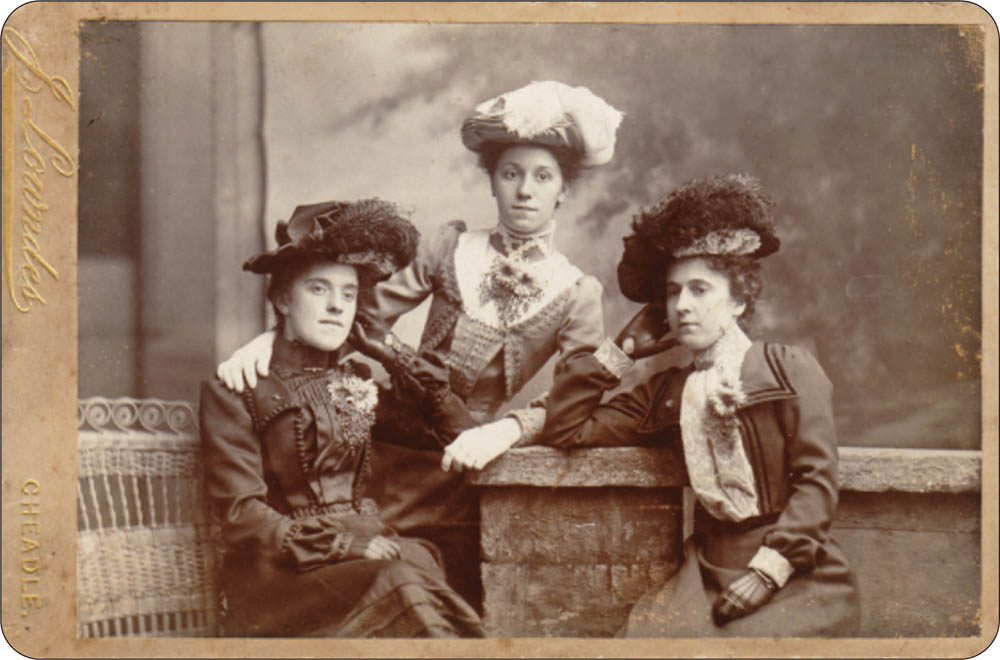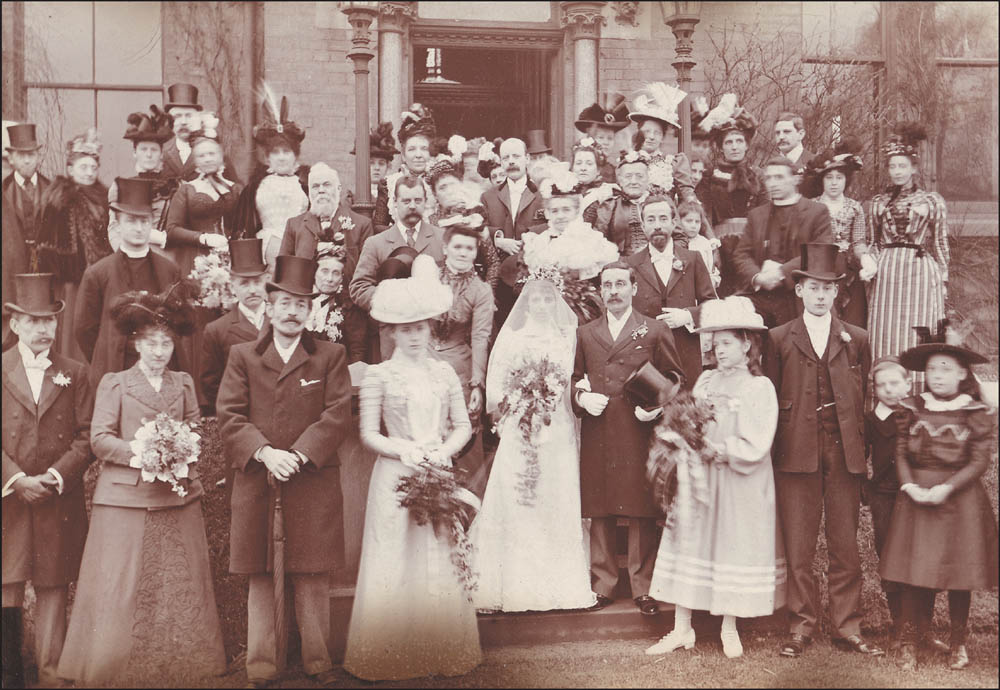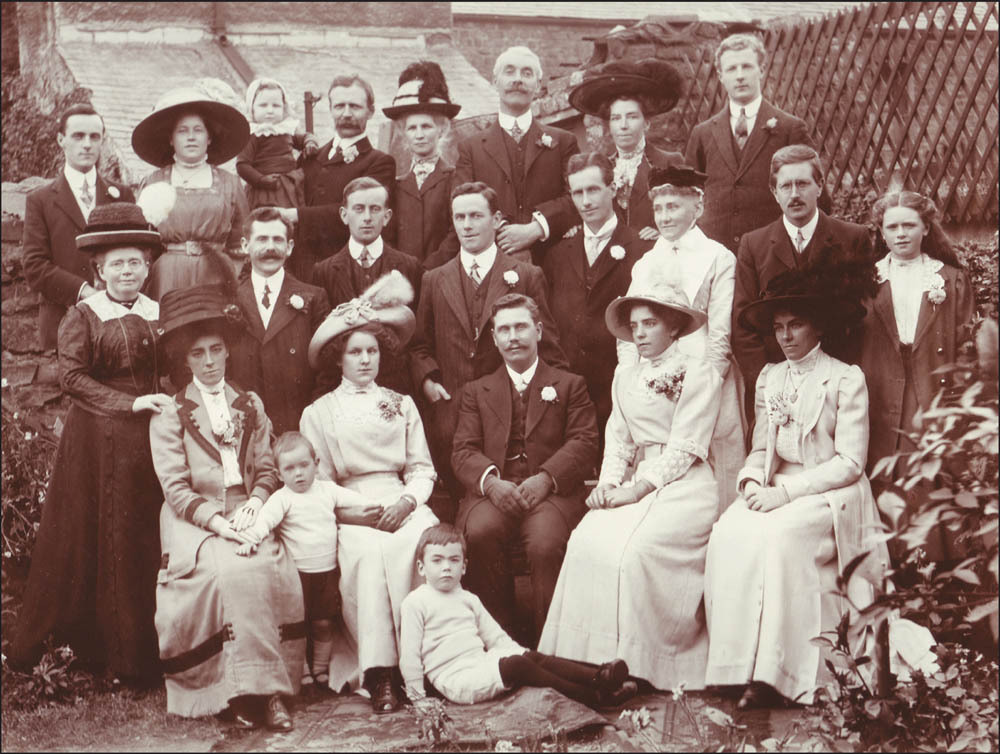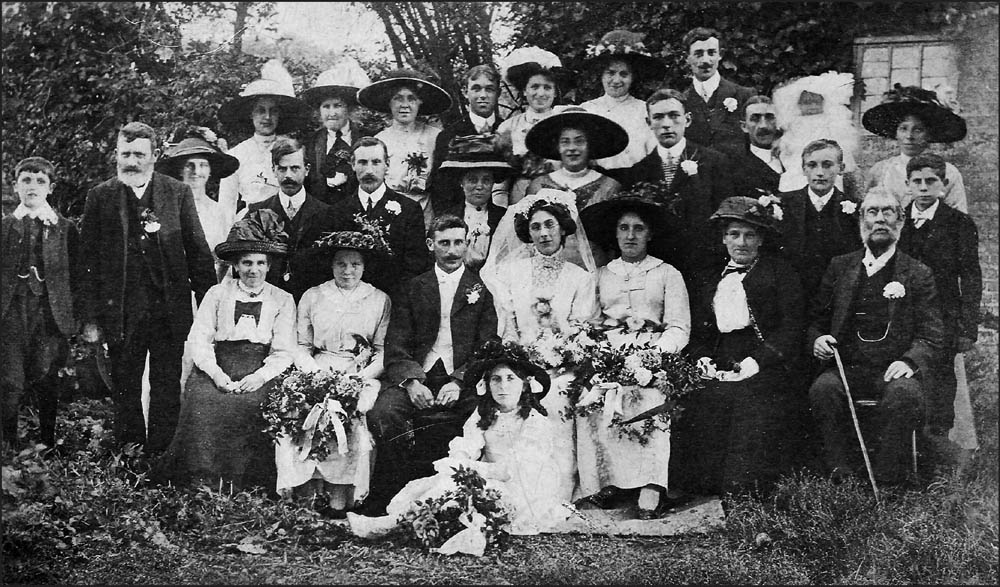

Although consigned to history, I suppose there are a couple of equivalents today where one can see massive and fanciful hats on display: Ladies’ Day at Ascot in the UK is one and the Kentucky Derby Festival in America is another. Similarly, George Cukor’s 1964 film My Fair Lady offered a flavour of those marvellous creations. Even the notoriously straight laced Queen Mary and her royal entourage got in on the act, and nostalgic old photos of the swirling crowds at the earlier 1908 Franco British Exhibition staged at the White City in London (followed shortly after by the Summer Olympics of that same year) reveal that the trend for gigantic hats decorated with feathers and suchlike had really taken off – if you’ll excuse the pun. The subsequent passing of Edward VII had also prompted the ‘Black Ascot’ race meeting in 1910 where a sea of large black hats and feathers could be seen on display as a fashionable token of respect and mourning by the great and the good for the dear departed 69-year-old scallywag. Only after Edward died did the British realise how much they had liked him. The old libertine had somehow earned the affection of his people and raised the Royal Family to new levels of popularity.
On the colonial front, old footage of the Royal visit to India – ‘The Jewel in the British Crown’ – by King George and Mary a year later in 1911 shows them being welcomed at a Durbar in Delhi by large crowds of local dignitaries and presumably foreign office and colonial staff with many of the ladies bedecked in these super-sized millinery creations. The local Delhi population, with barely a penny (or should I say rupee) to their names must have been somewhat taken aback to say the least at what the English ‘Memsahibs’ were wearing and the fashion for large hats seemed not to have spread to any great degree amongst the indigenous population – even those of higher (and thus more wealthy) castes!
The years of ‘The Playboy King’ Edward VII’s reign were often referred to as the ‘Golden Age’ by some and ‘La Belle Epoch’ by others. After Edward’s death, George V came to the throne, ushering in a more reserved era. In photographic terms, the days of the Daguerreotype, Ambrotype and the Carte de Visite were coming to an end and the humble postcard came of age – rapidly becoming the ‘Twitter’ of its day.
Before long, postcard collecting became a massive craze and the models pictured wearing bumper size hats were just one of the many card subjects available. By 1910, those in society who determined standards of etiquette were insisting that no ‘proper’ woman should leave the house without her head being covered by a hat! At the top end of society, Alice Keppel, one of Edward’s numerous mistresses, was often seen sporting one of these giant ensembles, as could the lady members of the king’s entourage at public functions and events. Depending on a woman’s social standing and ability to afford them, extravagant hats were all the rage, and the fashionable ladies from the upper echelons of society who gathered around Bertie were serious contributors to this trend. Many would actually change their entire outfits several times a day – and that could involve quite a few hats! Even their parasols were often covered in expensive feathers.

The popularity of Cartes de Visite and Cabinet cards was rapidly coming to an end. We see here, three young ladies sporting their feathered hats in this relaxed Cabinet card image from the early 1900s. (Picture by J. Lowndes of Cheadle.)
Society weddings (and even those of more humble folk) during the Edwardian period also provided a great opportunity for ladies to put on the style and showcase their wonderful hat confections. Prices varied enormously and it was not unheard of for certain members of the well-heeled set (probably with more money than sense) to stump up anything towards £100 for one of these creations – an absolute fortune (over £5,000 today). Having said that, there was also a wide range of prices at the cheaper end of the market and in 1909, the Redferns establishment of London charged one customer a ‘mere’ five guineas for a nice little number. Likewise, also in London, The Parisian Hat Co of New Bond St., Knightsbridge and Kensington were offering ‘Hats For Every Occasion – One Price Only – 30 Shillings.’

This joyful Cabinet card image, taken in Co. Antrim in 1900 depicts an array of large hats worn by the lady guests at the wedding of Alice Maud Ellen Sutton and Daniel Christie Beggs. (Image by kind permission of Orla Fitzpatrick.)

Irish Edwardian fashion to the fore with a profusion of amazing hats in this Dublin wedding picture – taken by John McCrae, circa 1910. (Image by kind permission of Orla Fitzpatrick.)
However, when you view these prices against the average annual wage of a Ladies’ Maid for example, who would earn around £32 per annum, then many of these lavish hats fell way outside the scope of ordinary working class folk; even a ‘mere five guineas’ was, to them, an unaffordable sum. Apart from domestic service, many women were forced into low paid work such as millinery in order to supplement their husband’s low wages, which often only amounted to between 12–15 shillings per week. One example from 1909 suggested that in rural Essex, some women were being paid just a pitiful 7 shillings for a long, arduous working week.
As with many new products and trends, there are spin-offs and the growth of the Edwardian fashion for bumper-sized ladies’ hats meant that very large boxes were needed to store and transport them in. Many of these hatboxes were attractive in their own right, featuring beautiful graphic design work. Numerous firms got in on the act of supplying these outsized containers to the millinery trade and were doing very nicely. Women proved a very suitable, adaptable and, as mentioned in the previous paragraph, cheap source of labour in the manufacture of these boxes, which were invariably produced by hand.

Yet another joyous gathering of ladies’ Edwardian hats at this Bridges family wedding gathering. (Image by kind permission of Tommy Heywood-Briggs.)